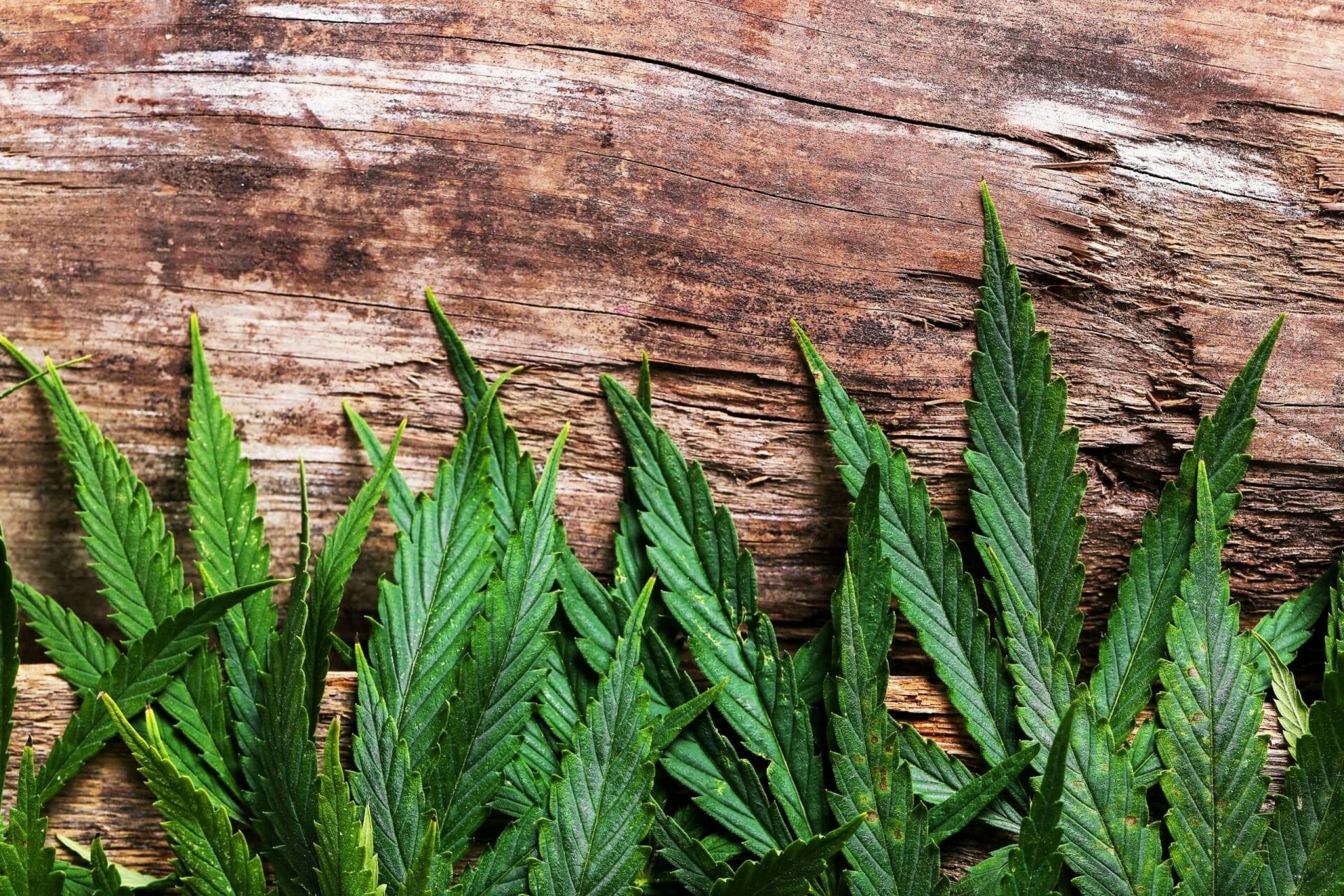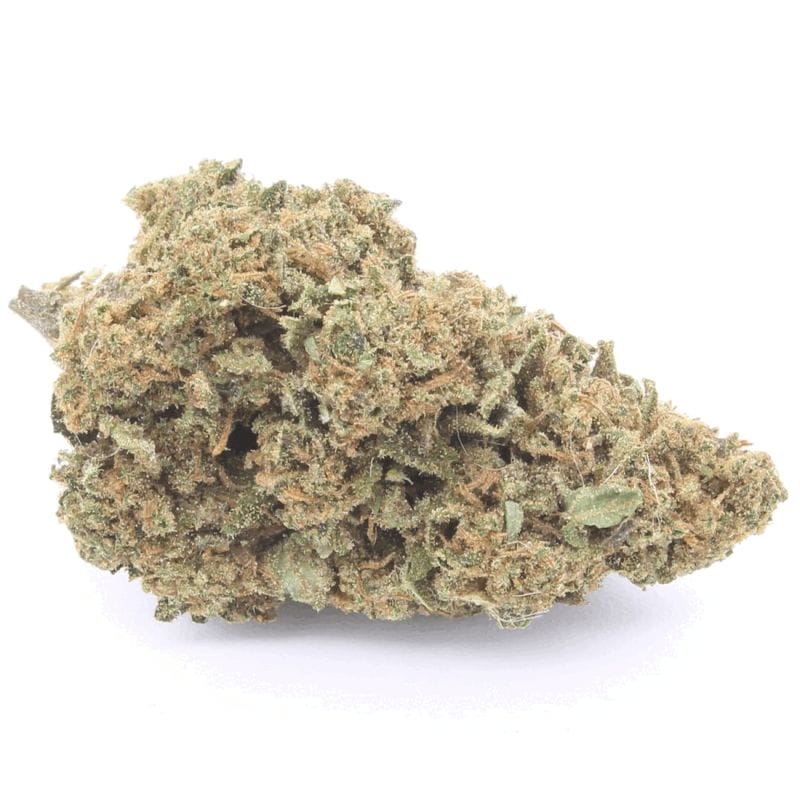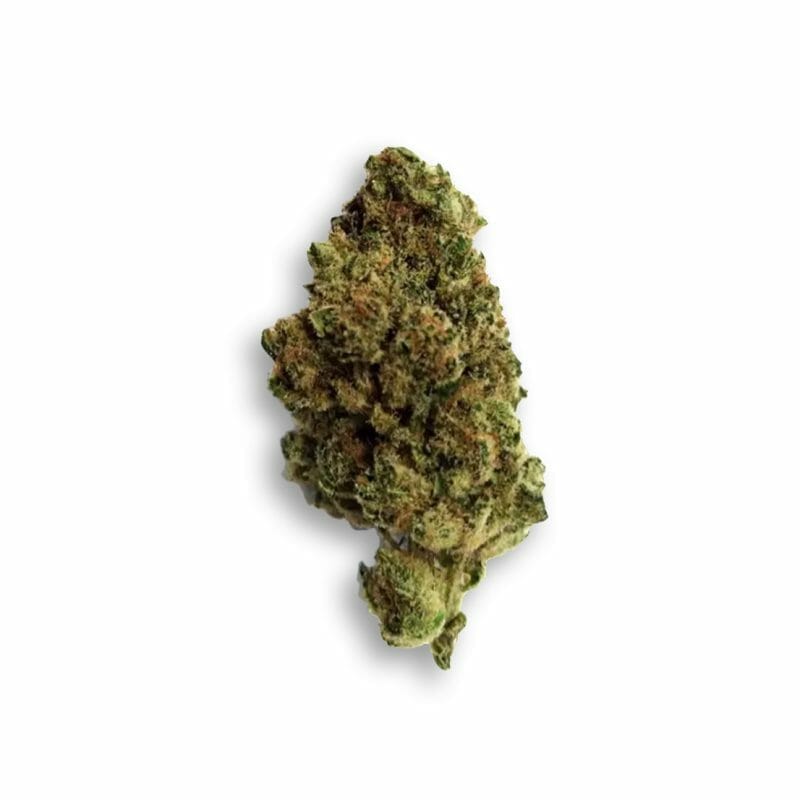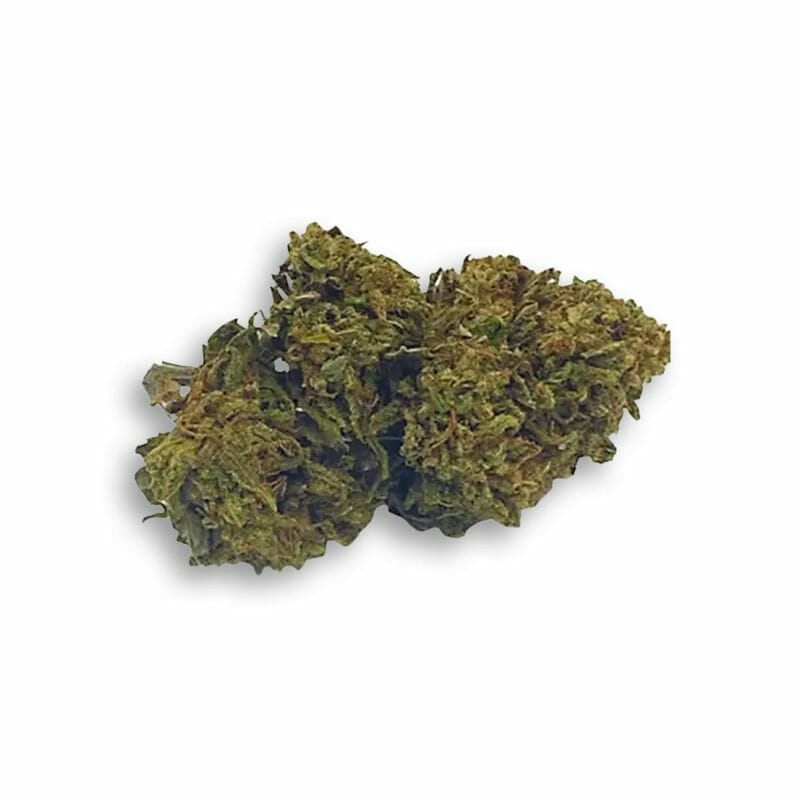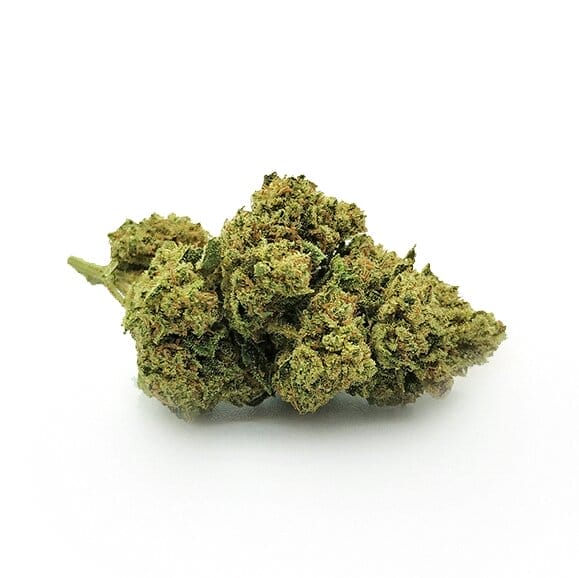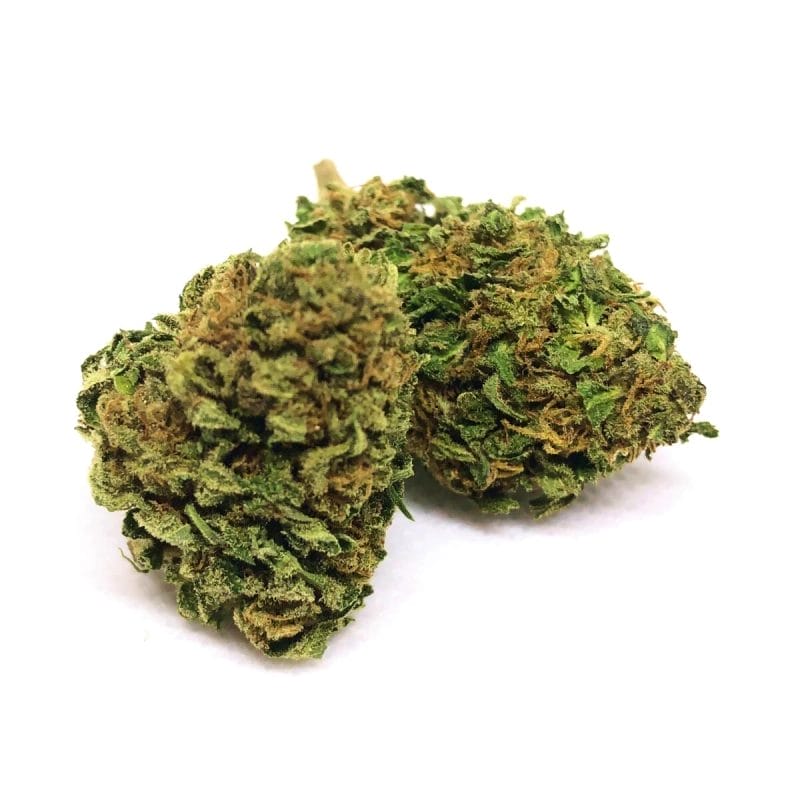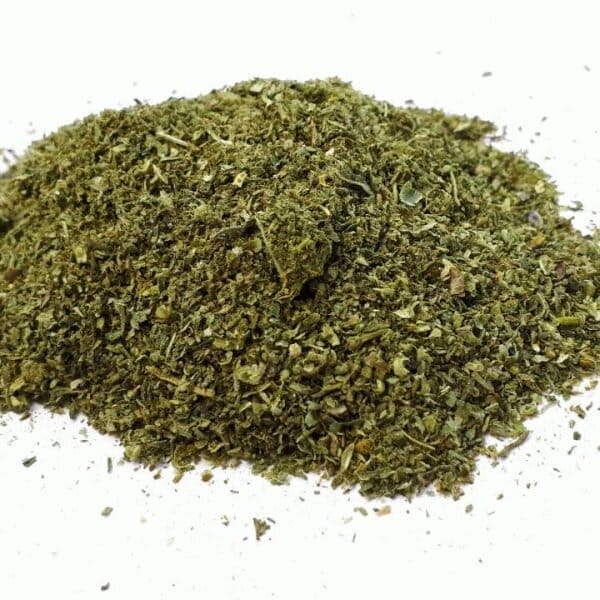For thousands of years, man has cultivated plants in the soil. However, in order to obtain excellent crops, large spaces and fertile soil are required. Hence, hydroponic cultivation has made its way to the most ingenious minds.
As the word itself suggests, the meaning of which we will see in a moment, hydroponics refers to a method of growing above ground using a water-based nutrient solution.
Hydroponics is a state-of-the-art methodology that adopts different techniques than traditional cultivation. Among its many advantages, it offers the possibility of growing plants even in environments and conditions that are not ideal for growing.
Hydroponic cultivation is highly exploited and has revolutionised the way we grow a wide range of plants, and weed is no exception, even for legal weed.
With a growing demand for high quality cannabis products, growers, who are increasingly interested in this method, are exploring innovative methods to maximise the yield and quality of their cultivation. So let’s find out how hydroponic weed is grown, what the benefits of this method are, and the most popular techniques used to achieve yield and quality production goals.
What is hydroponic weed?
The word ‘hydroponic’ derives from the union of hidro (water) and ponos (work) and refers to the growing plants in water. In the hydroponic method, the plants do not absorb nutrients and oxygen from the soil but use alternative methods.
The hydroponic cultivation is also known as soil-less or soilless cultivation and is an innovative and modern technique. Growers replace soil with substrates moistened with nutrients and water: the roots, immersed in the liquids, extract the nutrients they need directly from the solutions.
Indeed, water contains all the nutrients the plants need and the techniques used, which we will see later, ensure good oxygenation.
Cultivation without soil is quite expensive, requires specific skills and a lot of attention. Oxygenation is one of the most important aspects in order to avoid complications: if plants do not receive enough oxygen, growth will be much slower. Despite this, however, hydroponics has many advantages and benefits.
Hydroponic weed is therefore a variety of cannabis cultivated using the hydroponic method.
The use of hydroponics for cannabis has become increasingly popular among growers, both amateur and commercial, as it offers the possibility of obtaining consistent, high-quality yields. However, it is important to be aware that hydroponic cultivation requires a deeper understanding of the plants’ needs and more careful management of the system than traditional methods.
The history of hydroponics
One of the earliest records dates back to the hanging gardens of Babylon from 600 B.C. These gardens used a primitive form of hydroponics to irrigate plants: water from the Euphrates was piped into elevated canals that ran through the gardens, providing the plants with the water and nutrients they needed to grow even in such an arid area.
Some civilizations in the Americas, such as the Aztecs, developed similar hydroponic growing techniques. The Aztecs practised floating agriculture on stilts, growing maize, beans and squash in floating gardens that exploited aquatic resources.
In Asia, too, there are traces of ancient hydroponic cultivation practices. In China, for example, there is evidence of floating rice cultivation, where rice was grown on floating material inside ponds.
One of the first men to systematically explore soil-less plant cultivation was the German botanist Julius von Sachs. In 1860, Saches conducted pioneering experiments on the cultivation of plants using water.
However, the real impetus for the development of modern hydroponics came during the first half of the 20th century. In the 1930s and 1940s, a number of researchers began to explore the idea of growing plants in nutrient solutions without the use of soil. Prominent among them was the work of Professor William Frederick Gericke of the University of California, who introduced the term ‘hydroponics’ and conducted innovative experiments on growing plants in nutrient solutions.
In the 1960s, NADA started to explore hydroponic cultivation as a solution to provide food for space missions.
In the 1970s and 1980s, hydroponic cultivation gained commercial popularity. Today, it is widely used worldwide, both for food production and for the cultivation of ornamental and medicinal plants, including cannabis.

Difference between active and passive hydroponic method
The active and passive hydroponic method are two different approaches to growing plants without the use of soil, but they differ mainly in the way water and nutrients are supplied to the plant roots.
In the active hydroponic method, water and nutrients are supplied to the plant roots through a mechanical pumping system. This irrigation system may consist of pumps, pipes and distribution devices that deliver a nutrient solution directly to the plant roots at regular intervals. Active hydroponic systems are known to offer precise control over the amount and frequency with which plants receive water and nutrients, allowing the growth process to be optimised and yields to be maximised.
In the passive hydroponic method, water and nutrients are delivered to the plant roots without the use of pumps or mechanical devices. It therefore exploits capillarity and gravity to transport water and nutrients from the nutrient solution to an inert substrate, such as perlite, vermiculite or coconut fibre. The plants then absorb the water and nutrients through the capillarity of the substrate. Passive hydroponic systems are generally simpler and less expensive than active systems, but may be less efficient in providing even distribution of water and nutrients to plant roots.
While both methods have the common goal of providing plants with water and nutrients without the use of soil, the active hydroponic method uses a mechanical pumping system for this purpose, and the passive hydroponic method relies on capillarity and gravity to transport nutrients.
The advantages of growing weed hydroponically
Hydroponic cultivation techniques make it easy to grow hemp. Hydroponic weed is, therefore, cannabis grown without the use of traditional soil. Like any other plant, it needs nutrients, water and oxygen to grow. This alternative technique involves replacing the natural nutrients in the soil with nutrients introduced by the grower.
Growing pot above ground has many advantages that should be taken into consideration:
- Increased yield: hydroponic cultivation allows precise control of the plant growth environment, including factors such as water availability, nutrients, light and temperature;
- Reduced water consumption: hydroponic systems can be designed to recycle and reuse water more efficiently than traditional soil cultivation, thus reducing overall consumption;
- Precise nutrient control: with hydroponic cultivation, plants can be supplied with exactly the amount of nutrients they need, avoiding over- or under-fertilisation;
- Faster growth: plants grown hydroponically tend to grow faster than those grown in soil, as they have immediate access to an optimal amount of water, nutrients and oxygen;
- Lower risk of soil-borne diseases and less pollution: because hydroponic plants are not grown in soil, there is a lower risk of disease and attack by soil pests such as fungi and insects, as well as reduced pollution;
- Reduced space: hydroponic systems can be designed to occupy less space than soil cultivation;
- Cultivation in controlled environments: allows plants to be grown indoors that can be optimised to maximise crop quality and consistency, regardless of outdoor conditions.
Finally, among the effects of the hydroponic herb are apparently more ‘smokable’ flowers.
The costs of hydroponic cannabis cultivation
The costs of hydroponic cultivation can vary significantly depending on several factors, including:
- System size: a larger system will have a higher initial cost, but will allow more plants to be grown and produce a larger harvest;
- System type: active hydroponic systems are generally more expensive than passive systems;
- Components: the quality of the components used, such as the pump, timer and lamp, will influence the overall cost of the system;
- Nutrients and fertilisers: the type and amount of nutrients and fertilisers required will depend on the variety of cannabis cultivated and the stage of growth;
- Electricity: active hydroponic systems require the use of a pump, which may increase the cost of electricity;
- Water: the cost of water will depend on the local tariff and the amount of water used;
- Maintenance: hydroponic systems require regular maintenance, which may include cleaning the system, replacing components and monitoring pH and nutrient levels.
In general, start-up costs for a hydroponic cannabis cultivation can range from a few hundred euros to several thousand euros. Later production costs will be lower, but it is still necessary to consider the cost of electricity, water, nutrients and maintenance.
Here are some examples of costs for hydroponic cannabis cultivation.
Passive hydroponic system:
- Starter kit: 200-500 euros;
- Nutrients and fertilisers: 50-100 euros per growth cycle;
- Electricity: 10-20 euros per month;
- Water: 5-10 euros per month.
Active hydroponic system:
- Starter kits: 500-1000 euros;
- Nutrients and fertilisers: 50-100 euro per growth cycle;
- Electricity: 20-40 euros per month;
- Water: 5-10 euros per month.
In addition to material costs, it is also important to consider the time and effort required to successfully cultivate hydroponic cannabis.
What are substrates
Substrates are the materials, or combination of materials, used to replace soil.
There are different types of substrates, each characterised by different properties. The main ones are:
- Stone wool: one of the most widely used materials in hydroponics. Composed of inorganic material, it retains water and air well, but contains too much alkaline PHP. It must therefore be stabilised before use. This substrate offers shelter from temperature fluctuations and sunlight but is not biodegradable.
- Expanded clay: also known as growing stones, these are balls of clay subjected to high temperatures. The molten material turns into an ideal substrate that retains moisture and allows the roots to stay moist. Favourable points include the possibility of reusing this substrate several times.
- Perlite: a natural glass-like mineral with a neutral pH. Perlite can be used alone or mixed with another substrate.
- Vermiculite: Vermiculite has similar properties to perlite. This substrate can also be mixed with other materials or used on its own. Vermiculite is a silicate of aluminium, iron and magnesium that can expand considerably when subjected to high temperatures.
- Coconut fibre: plant material that retains moisture well and protects plants from fungi and diseases. A substrate sold in compressed and dried cubes, it must be hydrated to regain its original size. Coconut fibre is a recommended material as it contains natural hormones that promote the growth of cannabis plants.
Due to their good absorption capacity, they retain nutrients, water and oxygen and allow the seedlings to grow healthy.
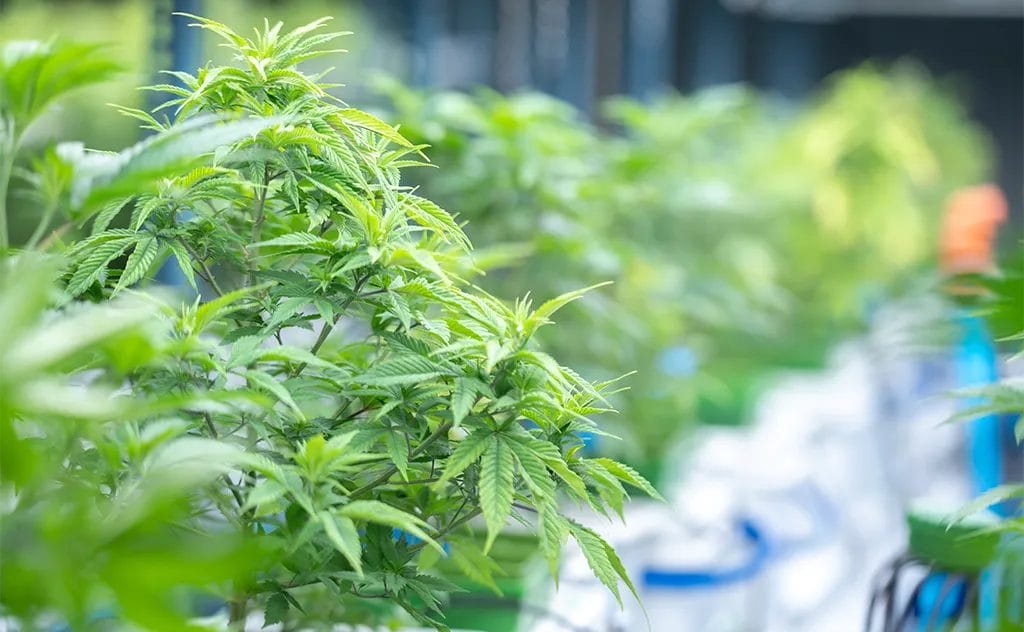
The best fertilisers for hydroponic grass
To choose the best fertilisers for hydroponics, check that they have the following characteristics:
- Specificity for hydroponics: generic fertilisers are not suitable for hydroponics, as they may contain ingredients that can damage the roots or accumulate in the system, while hydroponics-specific fertilisers are formulated with the nutrients needed by the plants in balanced proportions and in forms that can be easily absorbed by the roots;
- Balanced NPK: The NPK (nitrogen, phosphorus and potassium) ratio is critical for healthy cannabis growth, the best hydroponic herb fertilisers will have a balanced NPK ratio that meets the specific needs of the variety of cannabis grown and the growth phase;
- Micro-nutrients: in addition to NPK macronutrients, plants also need micro-nutrients such as calcium, magnesium, iron and zinc, so fertilisers should contain all the necessary micro-nutrients in chelated forms, which make them easily absorbed by plants;
- Balanced pH: the pH of the nutrient solution is crucial for the uptake of nutrients by plants, fertilisers must be formulated to have a balanced pH that suits the hydroponic system used;
- Solubility: fertilisers for hydroponic turf must be completely soluble in water to avoid clogging the irrigation system;
- Purity: they are free of contaminants such as heavy metals and pesticides.
Some examples of hydroponic cannabis fertilisers that fulfil these characteristics include Canna Hydro Vega and Canna Hydro Flores, General Hydroponics Flora Series three-part, Advanced Nutrients Sensi Coco Grow and Advanced Nutrients Sensi Coco Bloom.
Hydroponic grass cultivation methods
We spoke earlier about the difference between active and passive systems in hydroponics.
Here are some of the most common active hydroponic systems:
- Nutrient Film Technique (NFT) system: the nutrient solution is pumped into an inclined channel along which it flows continuously, forming a thin layer (film) that is absorbed by the plant roots;
- Deep Drench System (DWC): floods the plant roots with a nutrient solution, oxygenated by an air pump;
- Nebulisation (Aeroponics): plant roots are suspended in the air and are sprayed with a nutrient solution via nozzles or atomisers;
- Vertical System (Vertical Farming): involves growing plants on vertical columns or towers, the nutrient solution is pumped from the base and flows through a system of channels or pipes, wetting the plant roots along the way.
Let’s look at the most common passive systems instead:
- Wick system: uses a wick to transport the nutrient solution from the nutrient reservoir to the plant roots;
- Ebb and flow: periodically floods the plant roots with nutrient solution drained into a reservoir and reused.
The choice of the most suitable hydroponic growing method depends on several factors, including:
- The size of the cultivation space;
- The budget;
- The experience with hydroponic cultivation;
- The variety of cannabis you want to grow.
It is important to research and carefully plan the hydroponic cultivation project before starting.
Maria CBD’s light cannabis
Hydroponic weed cultivation is therefore a state-of-the-art solution for cannabis growers, as it offers an attractive opportunity to maximise yield, quality and cultivation efficiency. Through the use of advanced hydroponic systems, precise control over the growing environment of plants can be ensured, allowing them to reach their full potential in terms of development, cannabinoid and terpene production, and overall health.
If you are interested in experiencing the benefits of legal weed, we invite you to discover the range of products offered by Maria CBD Oil. With a commitment to excellence, Maria CBD offers a selection of high quality cannabis, produced to the highest standards and designed to meet the needs and preferences of each individual.
Visit our online shop, explore our extensive collection of products and get ready to discover all that legal cannabis has to offer.
-
 Ak47£3.50 – £270.00From 0,88 €/gr
Ak47£3.50 – £270.00From 0,88 €/gr -
 Amnesia Haze£3.50 – £350.00From 0,88 €/gr
Amnesia Haze£3.50 – £350.00From 0,88 €/gr -
 Blueberry£3.50 – £270.00From 0,88 €/gr
Blueberry£3.50 – £270.00From 0,88 €/gr -
 Boris Kiwi 2.0 | Legal Cannabis£3.50 – £250.00
Boris Kiwi 2.0 | Legal Cannabis£3.50 – £250.00 -
 Bubba Kush£3.50 – £350.00From 3,50 €/gr
Bubba Kush£3.50 – £350.00From 3,50 €/gr -
 Bubblegum£3.50 – £270.00From 0,88 €/gr
Bubblegum£3.50 – £270.00From 0,88 €/gr -
 Bz Queen£3.50 – £300.00From 0,88 €/gr
Bz Queen£3.50 – £300.00From 0,88 €/gr -
 Bz Queen – CBD Cannabis Trim£7.00 – £40.00From 0,40 €/gr
Bz Queen – CBD Cannabis Trim£7.00 – £40.00From 0,40 €/gr -
 Candy Kush£3.50 – £350.00From 0,88 €/gr
Candy Kush£3.50 – £350.00From 0,88 €/gr
 Contact us
Contact us 

